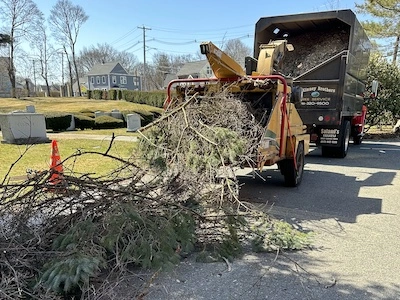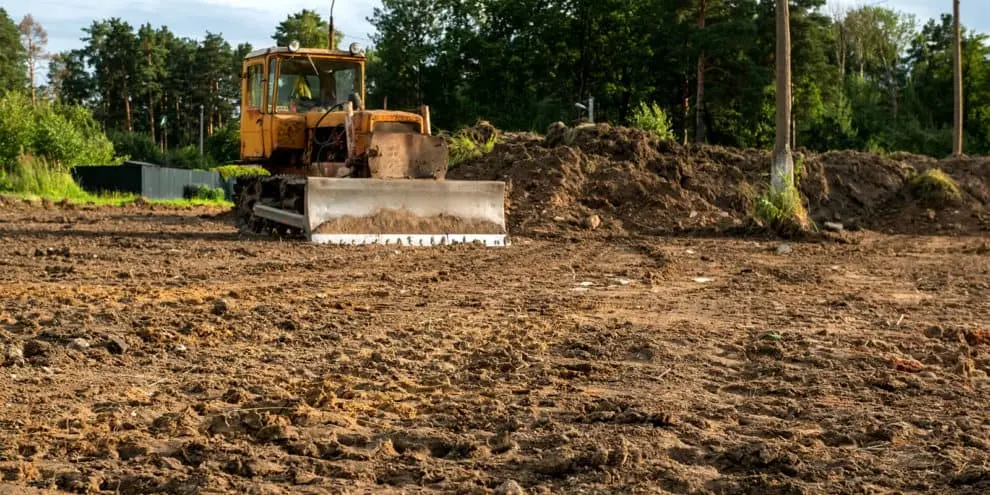The Eco-Friendly Impact of Brush Chipping on Local Landscapes
Introduction
In landscaping, brush chipping is crucial for cheap and excellent tree trimmer services. But what exactly is brush chipping? In simple terms, it's converting tree branches, shrubs, and other green waste into minor wood chips. These chips can then be used for various purposes, such as mulching, erosion control, or even as a fuel source for biomass energy.
Adopting eco-friendly landscaping techniques is more important than ever in the modern world when environmental concerns are paramount. These actions support our world's general health and aid in preserving our natural resources. By opting for methods like brush chipping, landscapers can reduce waste going to landfills, minimize pollution, and promote sustainability. Additionally, using organic materials like wood chips in landscaping projects enhances soil health, conserves water, and supports biodiversity.
Purpose of the Study
This study aims to delve deeper into the practice of brush chipping within the landscaping industry. We seek to shed light on its effectiveness as an eco-friendly landscaping solution by examining its techniques, benefits, and potential drawbacks. Through thorough research and analysis, we hope to provide valuable insights for landscapers, environmentalists, policymakers, and anyone interested in sustainable land management practices. The ultimate goal of this research is to encourage the use of brush chipping and other environmentally friendly techniques to make landscapes healthier and more green for coming generations.
Understanding Brush Chipping
Brush chipping is a simple yet effective process that transforms bulky green waste into helpful wood chips. First, the branches, shrubs, and other vegetative debris are fed into a specialized wood chipper machine. Inside the chipper, sharp blades quickly chop the material into smaller pieces. These pieces are then expelled through a chute, preparing uniform wood chips for use.
Various types of equipment are utilized for brush chipping, ranging from small portable chippers to large industrial-grade machines. Portable chippers are often used for smaller landscaping projects or residential properties, while more significant, tow-behind or self-propelled chippers are preferred for commercial or municipal applications. Additionally, some chippers come with additional features like adjustable settings for chip size or self-feeding mechanisms to streamline the process.
Brush chipping offers numerous environmental benefits that make it a preferred choice for eco-conscious landscapers:
By converting green waste into wood chips, brush chipping reduces the volume of organic material sent to landfills, thus minimizing methane emissions and reducing strain on waste management systems.
Using wood chips as mulch helps retain soil moisture, suppress weeds, and improve soil structure, leading to healthier and more resilient landscapes.
The decomposition of wood chips enriches the soil with organic matter, enhancing its fertility and promoting plant growth.
Brush chipping contributes to sustainable land management practices by recycling organic waste, conserving resources, and supporting ecosystem health.

Community Engagement and Education
Community engagement begins with outreach programs focused on promoting eco-friendly landscaping practices. These programs aim to educate residents about sustainable landscaping techniques, such as brush chipping, composting, and mulching. By organizing workshops, seminars, and informational sessions, communities can empower residents to adopt environmentally responsible landscaping practices that benefit their properties and the broader ecosystem.
Engaging residents in brush-chipping initiatives is another effective way to promote community involvement and environmental stewardship. By organizing community clean-up events or neighborhood brush chipping days, residents can actively participate in removing and recycling green waste from their properties. This hands-on involvement helps beautify the community and fosters a sense of ownership and pride in local environmental conservation efforts.
Educational workshops on composting and mulching provide residents with practical knowledge and skills to implement sustainable waste management practices in their yards. These workshops cover the benefits of composting, proper techniques for compost pile maintenance, and creative ways to use compost and mulch in landscaping. By equipping residents with the tools and know-how to compost organic waste and utilize mulch effectively, communities can reduce waste sent to landfills, improve soil health, and conserve water resources.
Community engagement and education are essential components of promoting eco-friendly landscaping practices and fostering environmental sustainability at the local level. Through outreach programs, resident involvement in brush chipping initiatives, and educational workshops on composting and mulching, communities can work together to create greener, healthier, and more resilient environments for present and future generations.
Economic Considerations
Brush chipping offers a cost-effective alternative to traditional disposal methods for green waste. Instead of incurring expenses for hauling and landfill disposal, property owners can save money by chipping their vegetative debris onsite or hiring a chipping service. Additionally, municipalities and landscaping companies can reduce operational costs associated with waste management by implementing brush-chipping programs. Brushing chipping provides a more economical solution for managing green waste while minimizing financial burdens on individuals and communities.
Another economic benefit of brush chipping is the potential for revenue generation through mulch sales. Wood chips from brush chipping can be sold as organic mulch to homeowners, landscapers, nurseries, and other businesses. Property owners and municipalities can offset the initial investment in chipping equipment or services and generate additional income by monetizing the byproduct of brush chipping. This creates a sustainable economic model where waste is transformed into a valuable commodity, benefiting both the environment and the bottom line.
Furthermore, brush chipping leads to long-term savings on landscaping and fire prevention expenses. Property owners can use wood chips as mulch to improve soil health, conserve water, and suppress weeds, reducing the need for costly landscaping inputs such as fertilizers, herbicides, and irrigation. Additionally, mulch creates a fire-resistant barrier around structures, reducing the risk of wildfires and potential property damage. Property owners can realize significant cost savings over time while enhancing their landscapes' health, aesthetics, and safety through prudent investment in brush chipping and mulching.
Challenges and Limitation
One of the challenges in brush chipping is the expense of operating and maintaining equipment. Frequent maintenance is necessary for wood chippers to operate efficiently and safely. This includes sharpening blades, replacing worn parts, and addressing mechanical issues. Additionally, the initial investment in purchasing or renting chipping equipment can be substantial for individuals or businesses. However, proactive maintenance and proper equipment management can mitigate these challenges and ensure efficient brush-chipping operations.
Transportation logistics present another limitation of brush chipping. After chipping, the resulting wood chips must be transported to their intended destination, whether for mulching, composting, or disposal. Transportation costs and logistical complexities can arise depending on the volume of material and distance to travel. Efficient planning and coordination of transportation routes and methods are essential to overcome this challenge and minimize associated expenses.
Public perception and acceptance of brush-chipping practices can also pose a challenge. Some individuals may be concerned about chipping operations' noise, dust, and visual impact. Additionally, more clarity needs to be provided about the effectiveness or safety of brush chipping to ensure widespread adoption of the practice. Educating the public about the benefits of brush-chipping, addressing concerns, and involving community members in decision-making can help improve acceptance and support for brush-chipping initiatives.
While brush chipping offers numerous benefits for managing green waste and promoting sustainable landscaping practices, it has challenges and limitations. By addressing issues related to equipment maintenance, transportation logistics, and public perception, communities can overcome these obstacles and maximize the effectiveness of brush-chipping efforts.
FAQs
1. What is brush chipping?
Brush chipping converts tree branches, shrubs, and other green waste into more minor wood chips using specialized wood chipper equipment.
2. How does brush chipping benefit the environment?
Brush chipping helps reduce green waste sent to landfills, promotes natural decomposition, prevents wildfires by removing combustible material, and enriches soil health through
mulching.
3. What types of equipment are used for brush chipping?
Depending on the scale of the project, various types of equipment are utilized for brush chipping, ranging from small portable chippers to large industrial-grade machines.
4. Can I use wood chips from brush chipping in my landscaping?
In landscaping projects, wood chips from brush chipping can be utilized as organic mulch to keep soil moisture, inhibit weed growth, and enhance soil health.
5. How often does brush chipping equipment need maintenance?
Brush-chipping equipment requires regular maintenance to ensure optimal performance and safety. This includes sharpening blades, replacing worn parts, and addressing mechanical issues as they arise.
6. What are the challenges of brush chipping?
Brush chipping challenges include equipment maintenance and operational costs, transportation logistics for chipped material, and public perception and acceptance of the practice.
7. How can I get involved in brush-chipping initiatives in my community?
You can get involved in brush-chipping initiatives by participating in community clean-up events, advocating for sustainable landscaping practices, and educating others about the benefits of brush-chipping.
8. Is brush chipping safe for the environment and wildlife?
When conducted properly, brush chipping is a safe and eco-friendly practice that helps preserve biodiversity, reduce waste, and support healthy ecosystems.
Conclusion
In conclusion, brush chipping is a valuable eco-friendly practice with numerous benefits for landscaping and environmental conservation. By converting green waste into wood chips, brush chipping reduces waste going to landfills, promotes natural decomposition, prevents wildfires, and enriches soil health through mulching. These benefits contribute to a greener, healthier planet for current and future generations.
We urge individuals, communities, and businesses to embrace sustainable landscaping practices like brush chipping. We can minimize waste, conserve resources, and support biodiversity by incorporating brush chipping into landscaping routines. Let's work together to prioritize environmental stewardship and develop thriving, sustainable landscapes for the earth and people.
Future research should optimize brush chipping techniques to minimize environmental impact and maximize efficiency. Areas of study could include:
Exploring alternative uses for wood chips and tree services Kingsport tn.
Enhancing equipment design for improved performance and safety.
Investigating innovative methods for transporting and utilizing chipped material.
We can ensure its long-term viability as a sustainable landscaping solution by continuing to innovate and refine brush-chipping practices.
Brush chipping offers a holistic approach to managing green waste while promoting environmental sustainability. By harnessing its benefits and driving wider adoption of sustainable landscaping practices, Johnson trees can create healthier ecosystems, stronger communities, and a brighter future.




